Pickleball Strategy for Intermediate Players: Elevate Your Game to the Next Level
Pickleball is a dynamic and fast-growing sport that combines elements of tennis, badminton, and table tennis. It’s a game that offers endless opportunities for both recreation and competition, allowing players to showcase their skills across various court strategies. For intermediate players, understanding and implementing effective strategies can significantly enhance gameplay and provide a more gratifying experience on the court. As players transition from beginner to intermediate levels, they often find themselves eager to refine their tactical approach, mastering not just the basic mechanics but also the intricacies of shot selection, court positioning, and communication. This article focus on Pickleball strategy for intermediate players with a blend of insightful tips, drills, and drills designed to sharpen reflexes and decision-making under pressure.
Key Pickleball Strategy for Intermediate Players
To elevate your pickleball game, it’s crucial to adopt key strategies that can enhance overall performance. Comparing these strategies to tools in a toolbox, each concept used in pickleball serves its unique purpose, allowing players to craft a strong game foundation. It’s essential to explore the nuances of serving, returning, and positioning much like how a skilled chef knows how to use their utensils to create a delicious meal. By focusing on methods that incorporate skill development and tactical approaches, intermediate players can shift their gameplay from ordinary to exceptional.
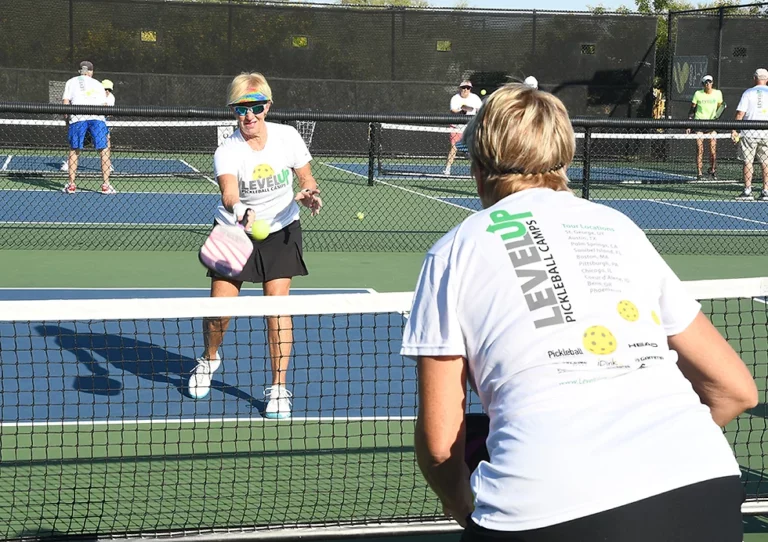
- Deep Serves and Returns: A deep serve not only sets the tone for the rally but also puts the receiver on the defensive. Similarly, a well-placed return challenges the server, allowing you to seize momentum early in the exchange.
- Mastering the Third Shot Drop: This technique often establishes control in play and helps players glide into the net, positioning them for subsequent shots effectively.
- Effective Positioning in the Non-Volley Zone: The NVZ, or ‘kitchen,’ is crucial for maintaining a dominant presence. Players who know how to assert themselves in this area can dictate the flow of the game.
- Developing a Diverse Shot Arsenal: Variety is key in maintaining opponent unpredictability. Training in various shot types ensures you’ll have the right response at the right moment.
By embracing these strategies, intermediate players can fine-tune their on-court capabilities, ultimately creating better gameplay opportunities and improving their performance.
Deep Serves and Returns
Deep serves and returns are fundamental aspects of effective pickleball strategy, especially for intermediate players eager to refine their game. They act as the opening move on the chessboard, setting the stage for the rest of the match. The priority is to serve deep into the opponent’s court, pushing them back and limiting their options, much like a defensive shield that creates space for advancing further.
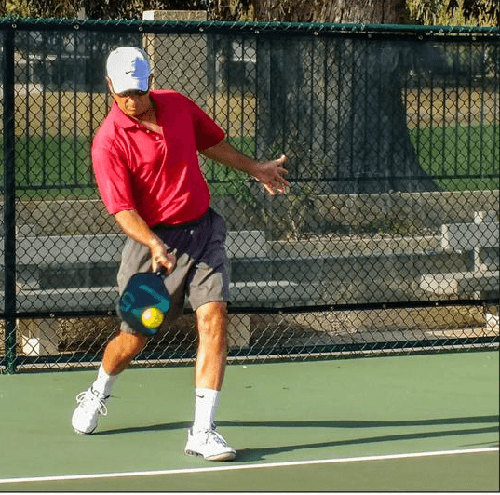
- Aim Deep: Focus on delivering serves that land close to the baseline. This forces opponents to respond from a less advantageous position, allowing you to counteract their moves effectively. By doing so, you not only increase your chances of winning the point, but you also disrupt their rhythm.
- Mix It Up: Consistency is essential, but variability can create doubt in your opponent’s mind. Changing the pace, spin, and placement of your serves will keep your opponent guessing and force them into a defensive stance.
- Types of Deep Serves:
- Flat serves for speed and power
- Topspin serves to enhance the ball’s bounce
- Slice serves that curve and confuse
- Target Weaknesses: Recognizing your opponent’s strengths and weaknesses allows you to exploit gaps. If someone struggles with a backhand return, aim your serves in that direction. This not only increases your probability of scoring but facilitates a more empowering experience on the court.
Tactics for Effective Returns
When returning the ball, an emphasis on deep, aggressive returns can disrupt your opponent’s rhythm while setting you up for subsequent plays.
- Key Points for Returns:
- Return Deep: Similar to serves, aim for deep returns to restrict your opponent’s options. A deep return can significantly impact the dynamics of the rally.
- Utilize Height: When returning, sending the ball high can provide you with more time to transition toward the non-volley zone while making it harder for your opponent to attack with precision.
- Aim for the Backhand: More often than not, players have a weaker side. By focusing returns toward their backhand, you can place your opponent in a vulnerable position.
By implementing these deep serve and return tactics into your gameplay, your control over the match will increase considerably, making your approach more assertive and fluid.
Mastering the Third Shot Drop
Mastering the third shot drop in pickleball is pivotal for intermediate players looking to establish dominance early in rallies. This shot differs significantly from other techniques, as it requires a combination of finesse and tactical awareness much like a painter delicately applying the final brushstrokes to carefully craft the perfect image.
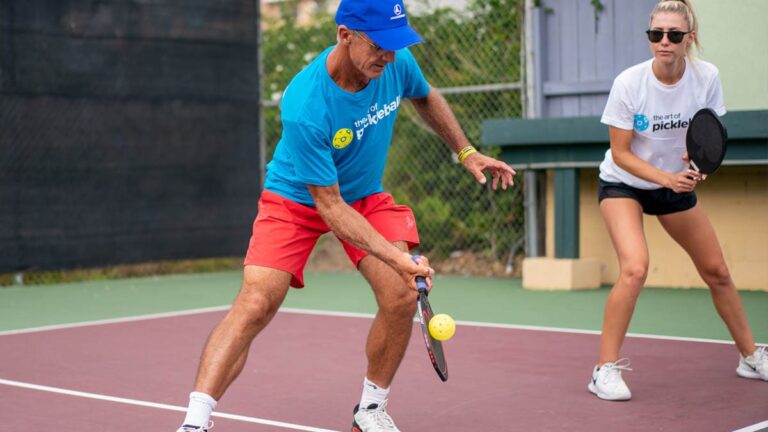
- Focus on Technique: Executing a third shot drop involves a gentle, underhand motion to create backspin, enabling the ball to land softly in your opponent’s kitchen a space where aggressive returns become challenging.
- Paddle Positioning: Proper paddle angle is vital for executing this shot effectively. Keeping the paddle open during contact and using your shoulders to generate power instead of your wrist can facilitate control and precision.
- Timing and Positioning: Make contact with the ball before your front foot, ensuring optimal placement and control. Being intentional with your positioning sets you up for success and helps you create opportunities for your next play.
- Practice Drills:
- Drop Shot Drill: Set up specific targets within the NVZ to practice your approach. Aim for soft placement to improve accuracy and become accustomed to the required trajectory.
- Game Simulation: Engage in match-like scenarios to understand when to employ the third shot drop effectively. Observing your opponent’s position and movements will enhance your overall strategic outlook.
By refining your third shot drop strategy, intermediate players can significantly enhance their control on the court, allowing them to transition smoothly into the NVZ with confidence.
Effective Positioning in the Non-Volley Zone
The non-volley zone, or kitchen, is a fundamental aspect of pickleball that provides the opportunity to control the pace of the game effectively. Well-executed positioning can prevent opponents from gaining traction, resembling a gatekeeper at the entrance of a prestigious event, assessing who is deserving of the chance to advance.
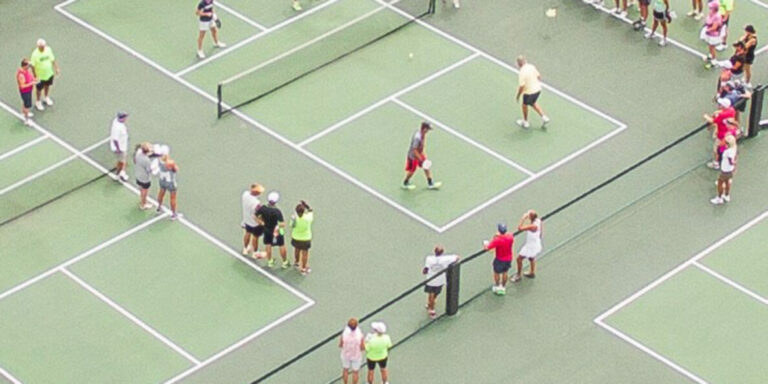
- Transitioning Quickly: After executing the third shot drop, immediately move toward the non-volley zone. This proactive approach puts you in an offensive position, allowing you to intercept your opponent’s return and continue your attack.
- Aggressive Stance: Maintaining an athletic posture with bent knees lowers your center of gravity, increasing your stability and responsiveness to quick movements. Being ready to engage will enhance your positioning as the game unfolds.
- Take Control of the Net: Once you’re established in the NVZ, you can dictate the flow of the game. A solid presence here allows you to cut off angles and limit your opponent’s options maximizing your offensive potential.
- Utilizing Footwork: Effective footwork is essential for transitioning in and out of the NVZ. Fluid, efficient movements after your third shot drop allow you to remain agile and prepared for your opponent’s return shots.
Proper positioning in the NVZ transforms the way an intermediate player approaches the game, undoubtedly enhancing their ability to maintain pressure over their opponent.
Developing a Diverse Shot Arsenal
The ability to adapt and use a diverse shot selection makes all the difference in a player’s performance, much like a musician who masters various instruments to create harmonious melodies. For intermediate players, broadening the range of shots in their repertoire can elevate their game tremendously.
- Master Different Shot Types: Regular practice of a variety of shots drives, drops, lobs, and spins keeps opponents guessing. For example, a well-placed drop shot can force an opponent into a defensive stance while a deep drive maintains pressure.
- Incorporate Strategic Shot Placement: Shot placement is crucial when it comes to applying pressure on your opponents. Aim for corners, target their feet, or exploit weaker sides, often leading to difficult shots for your adversaries.
- Engage in Consistent Drills: Repetitive drills that focus on specific shots like cross-court dinking or a targeted lob practice build muscle memory and confidence over time. This consistent practice leads to improved execution and adaptability during matches.
- Develop Your Defensive Shots: Defensive shots such as resets and soft blocks can regain control during intensities of aggressive play. These shots allow for recovery while positioning the ball in challenging locations for your opponents.
By engaging in diverse shot practices and focusing on shot placement, intermediate players can develop a more versatile strategy that keeps opponents on their toes.
Shot Selection Techniques
Selecting the right shot in pickleball can significantly influence the outcome of rallies. Having a variety of techniques at your disposal allows you to adapt to different match situations and player styles. Effective shot selection incorporates tactful strategies such as targeting an opponent’s weak sides or utilizing spin to manipulate the ball’s trajectory.
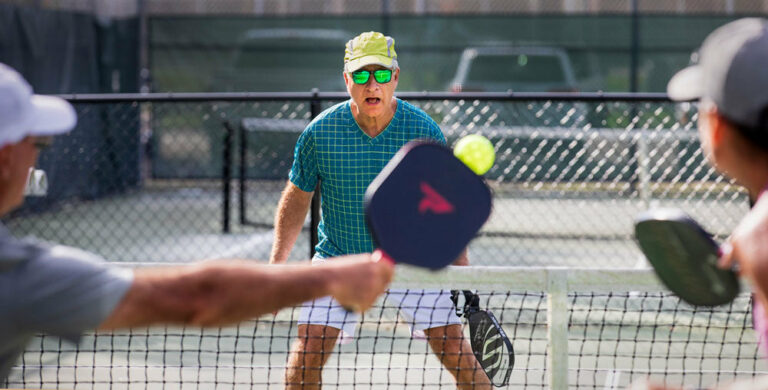
- Targeting Weak Sides: Understanding your opponent’s weaknesses is key to successful shot selection. By observing shots they struggle to handle like backhand returns you can increase your chances of winning points.
- Utilizing Spin in Shots: Properly applied spin can add complexity to your shots, making them less predictable.
- Topspin: Forces the ball to dip quickly, resulting in high bounces.
- Backspin: Keeps the ball low and can force difficult returns when executed correctly.
- Sidespin: Alters the ball’s trajectory, thereby complicating your opponent’s response.
- Practice Techniques: Regular drills focused on achieving consistent spins during serves, returns, and groundstrokes will help you enhance your shooting game’s complexity.
By mastering these shot selection techniques, intermediate players can significantly elevate their game, keeping their opponents in constant flux.
Targeting Opponents’ Weak Sides
Targeting your opponent’s weaker shots is a fundamental strategy that can significantly improve your chances of winning matches. It involves actively analyzing their game to identify vulnerabilities, much like a detective piecing together clues to solve a mystery.
- Identify Weaknesses: Pay attention to which areas of an opponent’s game tend to falter. If they consistently struggle with their backhand, making it a focal point during exchanges can lead to errors.
- Analyze Patterns: Observe your opponent’s playing style throughout the match. Recognizing tendencies can help identify when they’re most vulnerable, allowing you to exploit it at opportune moments.
- Variety in Shot Selection: Mixing up shot types can keep opponents guessing. Incorporating a combination of drives, spins, and dinks can help confuse your opponent and increase your effectiveness in targeting weaknesses.
Utilizing Spin in Shots
Implementing spin into your shots not only enhances your gameplay but also adds an element of unpredictability, challenging your opponent’s response capabilities.
- Types of Spin:
- Topspin: Creates a high-bouncing ball that’s more challenging to return. It can push your opponents back, allowing for additional attacking opportunities.
- Backspin: Causes the ball to remain low, especially effective during net plays; it’s valuable when your opponent is positioned advantageously.
- Sidespin: Creates unexpected movement, throwing opponents off balance and creating openings for attacking shots.
- When to Use Spin:
- Apply topspin on high balls to pressure an opponent. Use backspin when you’re in a defensive position and want to neutralize play or set up for a good return.
- Practice Techniques: Routine drills focusing on achieving consistent spin in various shot scenarios will greatly enhance your shot effectiveness.
By effectively targeting your opponent’s weak sides and mastering spin in shots, intermediate players can gain a significant tactical advantage that enhances their overall gameplay.
Strategic Shot Placement Across the Court
Strategic shot placement can turn the tide of a match dramatically, similar to how a well-timed play can shift a game in sports. Understanding where to position your shots can keep your opponent on the defensive while maximizing your offensive opportunities.
- Understanding Shot Placement: Knowing where to direct your shots is crucial. Hitting down the line vs. cross-court can effectively move your opponent, creating gaps for subsequent shots.
- Target Weaknesses: Consistently place shots in areas where your opponents are weak. For instance, if they struggle with low balls, hitting shots aimed at their feet can significantly increase the likelihood of forcing errors.
- Control with Dinks: Dinking plays a critical role in controlling game pace. Effective dinks that land near the NVZ pressure opponents and can set up for eventual attacking shots.
- Preparation and Positioning: Anticipating where the ball will go and positioning yourself accordingly is essential. Always be ready to adapt based on the ball’s trajectory, which helps with accurate shot execution.
By optimizing shot placement and incorporating these strategies, intermediate players can become far more effective in their game, increasing their chances of winning points and matches.
Enhancing Footwork and Agility
Footwork and agility are crucial for intermediate players in pickleball, as they underpin many successful strategies on the court. Improving these elements can increase a player’s ability to respond accurately and effectively during a match.
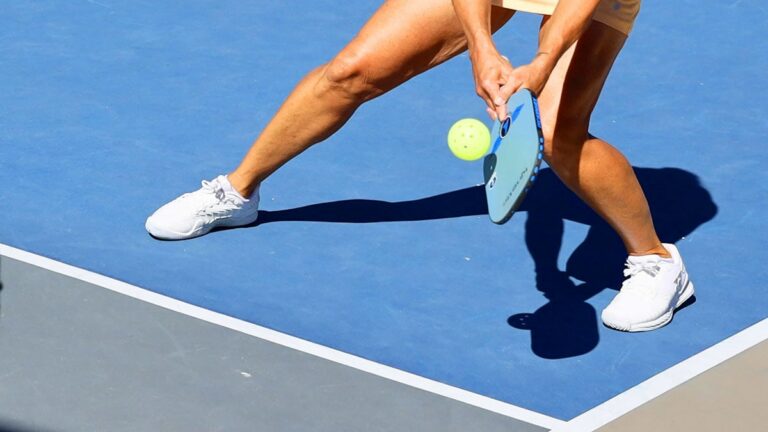
- Stay Light on Your Feet: Positioning yourself on your toes allows for greater balance and mobility, essential for making quick lateral movements.
- Agility Drills: Engage in focused drills that emphasize lateral movement along the NVZ line. By practicing small adjustments after hitting a shot, you develop better control.
- Forward and Backward Movements: Concentrate on improving depth in your shots by working on moving both forward and backward on the court. This vital skill enhances your control over groundstrokes.
- Dynamic Warm-up Routines: Incorporate dynamic stretches and warm-up exercises into your practice sessions to enhance flexibility and mobility, which are essential for effective court movement.
- Practicing Different Movement Patterns: To develop agility, practice moving in various patterns side-to-side, forward-and-backward, and diagonal movements. This adaptability will prove invaluable during matches.
Implementing these strategies fosters improved footwork and agility, crucial for making effective plays during competitive scenarios.
Importance of Warm-Up Routines
Engaging in proper warm-up routines is vital for enhancing performance in pickleball, serving as the foundation upon which players can build their skills.
- Injury Prevention: Gradually warming up muscles and joints reduces the risk of strains or sprains. It prepares the body for the intense movements involved in pickleball.
- Improved Range of Motion: Dynamic warm-up exercises contribute to greater flexibility, ensuring that you can execute shots and movements efficiently on the court.
- Enhanced Performance: A thorough warm-up routine leads to optimized body movements, translating into quicker reactions and better agility throughout matches.
Techniques for Improving Court Movement
Improvement in court movement not only enhances footwork but also elevates overall gameplay during pickleball matches.
- Dynamic Warm-Ups: Incorporate exercises like quick side sprints and lateral shuffles into warm-up routines to mimic movements required during a game.
- Agility Drills: Implement cone drills and ladder exercises to build strength and coordination, critical for successful movement transitions.
- Footwork Techniques: Master foundational techniques such as the split-step, crossover step, and side shuffle to improve quick response times.
- Mental Agility and Anticipation: Developing the ability to anticipate the ball’s trajectory can enhance positioning and movement efficiency.
By focusing on these techniques, intermediate players can substantially elevate their gameplay and build crucial agility on the court.
Communication and Teamwork in Doubles
Effective communication and strong teamwork are indispensable assets in doubles pickleball. These elements lead to greater synergy between partners, minimizing errors and boosting overall performance.
Effective Partner Communication Strategies
- Pre-Game Communication: Discuss individual playing styles, roles, and strategies before the match. Knowing who covers the middle area of the court reduces the chance of confusion during play.
- Verbal Cues: Clear calls such as “mine” or “yours” help claim shots effectively, while phrases like “leave it!” or “out!” prevent unnecessary errors.
- Hand Signals: Establish hand signals for quick communication during matches. For example, an open palm could indicate a switch in position, while a fist might signal to hold ground.
- Feedback Culture: Foster an environment of encouragement; provide continuous support and constructive feedback to enhance teamwork confidence.
By implementing these communication strategies, intermediate players can cultivate stronger partnerships and overall game dynamics during doubles matches.
Understanding Cooperative Play Dynamics
Cooperative play dynamics is rooted deeply in communication and proactive teamwork. Developing a shared strategy ensures both players are prepared for each situation, just like an orchestra harmonizes under the conductor’s guidance each team member knowing exactly when to play their part.
- Court Positioning: Learning how to position yourselves effectively to cover different areas of the court is essential, ensuring that both players have defined roles.
- Adjusting to Opponents: Recognizing the playing styles of your opponents enables teams to adapt their strategy effectively during matches.
- Practice Drills: Engage in drills that focus on communication and teamwork; the “Call & Respond” drill fosters collaborative skills that can significantly improve overall performance.
By mastering these principles, intermediate players can enhance their communication skills and teamwork on the court, leading to improved performance and greater enjoyment of the game.
Advanced Game Strategies
As players grow in skill and confidence, advanced game strategies can be pivotal in transforming their play style. Advanced tactics involve a deeper understanding of gameplay dynamics and an ability to adapt quickly in response to opponents’ strategies.
Utilizing Lobs and Dinks Effectively
Mastering the use of lobs and dinks can add a layer of sophistication to your gameplay. Much like different spices can enhance a dish’s flavor, effectively employing these techniques can elevate your overall playing style.
- Lob Strategies: Lobs are essential for countering opponents who crowd the net. A well-timed lob can allow you to regain control, forcing your opponent to retreat.
- Dink Techniques: Dinks create opportunities by putting opponents off balance. By varying the depth, height, and spin of your dinks, you can keep your competition guessing.
- Combining Dinks and Lobs: Alternating between these shots can effectively confuse opponents, creating opportunities for hitting winning shots later in the rally.
Observing and Adapting to Opponent’s Strategies
Being a keen observer of your opponents’ tendencies allows for effective strategy adjustments. By understanding their weaknesses much like analyzing a puzzle you can adapt your gameplay accordingly.
- Pattern Recognition: Throughout the match, notice your opponent’s playing styles. Adjusting your own shots based on this information can lead to winning points.
- Dynamic Strategy Adjustment: It’s vital to be flexible in your approach. Quickly shifting from a defensive to an offensive strategy based on your opponent’s actions can change the flow of the match.
- Controlling the Match Pace: Utilizing soft shots to slow the game down or accelerating with aggressive shots can dramatically change how you manage the match tempo.
By applying these advanced strategies, intermediate players can significantly improve their overall performance and support their continued growth in the game.
Practice Drills for Skill Improvement
Regular practice drills are essential for enhancing the skill set of intermediate players. By focusing on specific drills, players can sharpen their technique and improve their competitive play.
Drills to Enhance Accuracy and Control
- Target Practice Drills:
- Serve Accuracy Drill: Mark target areas in service boxes and aim to hit them consistently, enhancing placement skills.
- Third Shot Drop Drill: Practicing dropping shots into specific areas near the NVZ improves accuracy and placement during crucial rallies.
- Dinking Drills:
- Triangle Dink Drill: Engage in dinking practices targeting designated areas, enhancing both ball placement and reaction time.
- Dink Ladder Drill: Alternate between forehand and backhand dinks with a partner to improve consistency.
Partner Drills for Competitive Practice
- Rotating Overlaps Drill: Practice covering for each other as a team during rallies. This drill promotes anticipation and responsiveness to one another’s needs throughout the match.
- Pressure Game Simulation: Set up scenarios where one player has to respond to shots from two opponents, enhancing decision-making skills under pressure.
By incorporating practice drills that focus on accuracy and cooperative play, intermediate players can significantly enhance their skills and prepare themselves for successful competition in pickleball.
Frequently Asked Questions (FAQ)
Q1: What is the most crucial skill for intermediate players to develop?
A: Developing a diverse shot arsenal and effective court positioning are critical skills that can significantly enhance overall game performance.
Q2: How can I identify my opponent’s weaknesses?
A: Pay attention to their preferred shots during the match. Observing patterns in their play will help you identify areas where they struggle.
Q3: Why is communication important in doubles play?
A: Effective communication minimizes confusion and maximizes the efficiency of teamwork, allowing players to respond quickly and accurately during matches.
Q4: What practice drills should I prioritize?
A: Focus on drills that improve accuracy, such as Target Practice and Dinking Drills, to build consistency in your shots.
Q5: How can I improve my footwork?
A: Engage in agility drills and practice movements like side shuffles, which will enhance responsiveness and positioning during gameplay.
Key Takeaways
- Develop a Diverse Shot Arsenal: Practice a variety of shots to keep opponents guessing.
- Strengthen Communication: Clear and effective communication enhances teamwork and minimizes mistakes.
- Master the Third Shot Drop: Executing this shot properly can establish control in a rally.
- Emphasize Footwork: Improved footwork enhances overall agility and responsiveness on the court.
- Utilize Spin: Adding spin can complicate returns for your opponent, giving you a tactical advantage.
Conclusion
Mastering pickleball strategy for intermediate players involves the continuous development of strategies, communication, and movement techniques. By focusing on key areas such as shot selection, deep serves, effective positioning, and teamwork, players can elevate both their own skills and the overall dynamic of their matches. With consistent practice and a willingness to adapt, intermediate players can deepen their understanding of the game, enabling them to embrace the challenges and joys of pickleball with confidence and skill.
